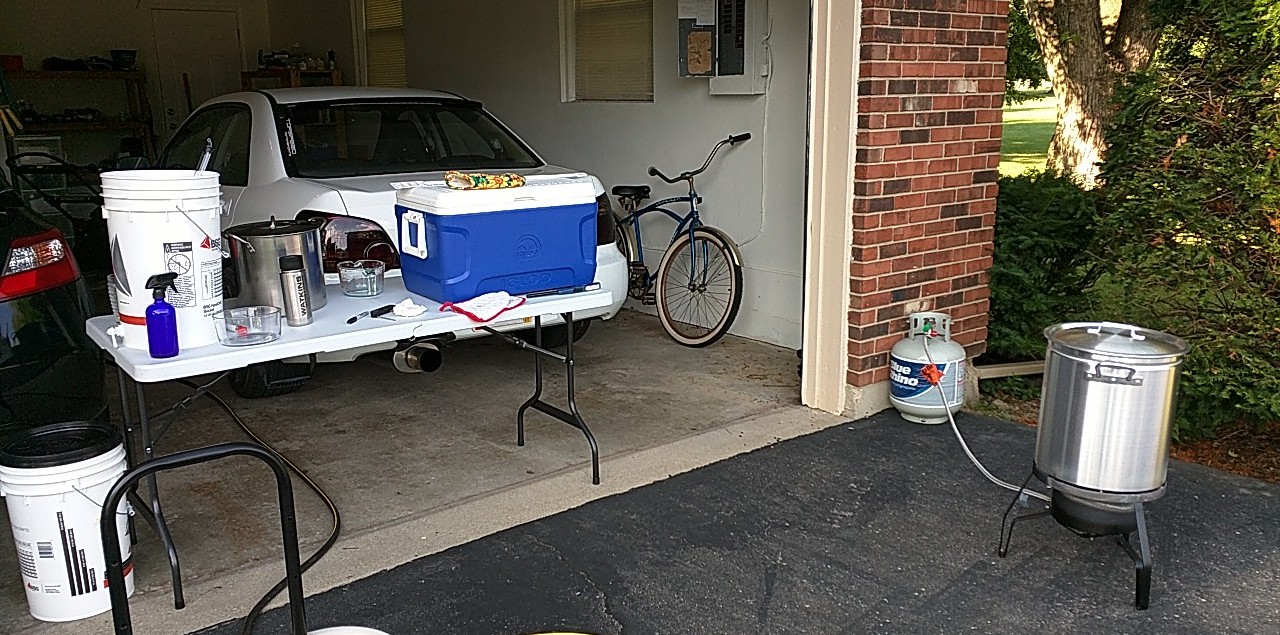dawn_kiebawls
Lawncare and Landscaping enthusiast
- Joined
- Jun 10, 2017
- Messages
- 838
- Reaction score
- 516
Hey guys and gals, I have 2 brews under my belt. The first, an extract kit, turned out drinkable. Not as bad as I feared. For the second batch, I got full of myself and decided to try making my own recipe for some reason. Its dry hopping right now, but my gravity sample tastes like jet fuel...Brewersfriend said it would come out to ~7% but its looking more like 8.5-9..Oh well, lesson learned!
Anyway, I've been wanting to switch to AG for the variety of recipes, at my LHBS grain is cheaper than DME (not sure if it is everywhere in general), recipe customizability and I want to be cool! lol
In the next week or so I'm going to assemble my mash tun from a 10g rubbermaid. Is there a benefit to the cylindrical coolers, or the large rectangular ones? Eventually I'd like to be making big IPAs and porters/stouts for SWMBO so I'm concerned a 10g mash tun won't be capable of holding a 20lb grain bill. I'm in a 900sq/ft apartment so I will be bottling, kegging is out of the question for a while so I'll be sticking to 5-6g batches.
My tap water is pretty chlorinated, should I do maybe a 70/30 distilled to tap with a camden tablet? bottled spring water? Or should I just run to my folks place to catch up and mooch ~7g of RO water?
I'm planning to do several recipes out of Palmers 'How to Brew' to get the feel for a few different styles, get the hang of batch sparging and fine tune my processes before I can jump into doing a Pliney clone! (Unless you think someone could accomplish a bigger beer for the first AG batch?? I want something big, hoppy and delicious in my fridge ASAP! )
)
Also, I need to upgrade to a propane burner before I can even do a full boil. My electric range struggles to boil 3.5 gallons so I suppose that will have to be my jump-off point. I've heard several people say they are very pleased with their Bayou Classic burners. Any other opinions?
If anyone has advice, criticism, comments, concerns or anything along those lines I would love to hear it! I would like to be brewing in a week, especially since I'll be all out of HB for over a month since I didn't realize how fast 5 gallons goes! Thanks for all the help!!
Anyway, I've been wanting to switch to AG for the variety of recipes, at my LHBS grain is cheaper than DME (not sure if it is everywhere in general), recipe customizability and I want to be cool! lol
In the next week or so I'm going to assemble my mash tun from a 10g rubbermaid. Is there a benefit to the cylindrical coolers, or the large rectangular ones? Eventually I'd like to be making big IPAs and porters/stouts for SWMBO so I'm concerned a 10g mash tun won't be capable of holding a 20lb grain bill. I'm in a 900sq/ft apartment so I will be bottling, kegging is out of the question for a while so I'll be sticking to 5-6g batches.
My tap water is pretty chlorinated, should I do maybe a 70/30 distilled to tap with a camden tablet? bottled spring water? Or should I just run to my folks place to catch up and mooch ~7g of RO water?
I'm planning to do several recipes out of Palmers 'How to Brew' to get the feel for a few different styles, get the hang of batch sparging and fine tune my processes before I can jump into doing a Pliney clone! (Unless you think someone could accomplish a bigger beer for the first AG batch?? I want something big, hoppy and delicious in my fridge ASAP!
Also, I need to upgrade to a propane burner before I can even do a full boil. My electric range struggles to boil 3.5 gallons so I suppose that will have to be my jump-off point. I've heard several people say they are very pleased with their Bayou Classic burners. Any other opinions?
If anyone has advice, criticism, comments, concerns or anything along those lines I would love to hear it! I would like to be brewing in a week, especially since I'll be all out of HB for over a month since I didn't realize how fast 5 gallons goes! Thanks for all the help!!



